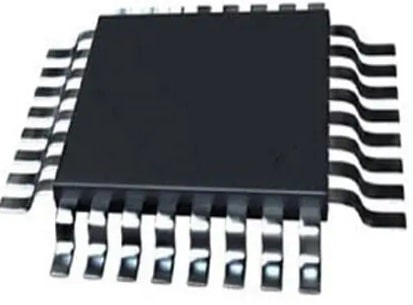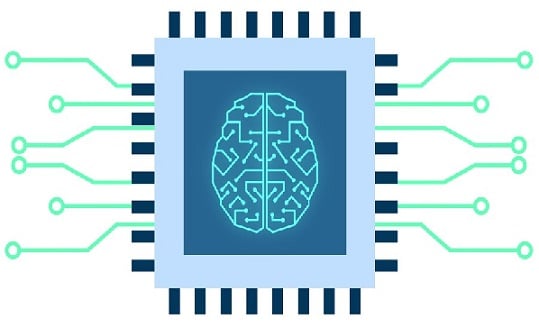For decades, microcontrollers (MCUs) have been the silent workhorses inside billions of devices—from microwave ovens to automotive control units. They are compact, energy efficient, and reliable, making them ideal for running repetitive, predictable tasks for years without failure. But in recent years, a new category of computing hardware has emerged: AI chips. These chips are not just faster MCUs—they are purpose-built processors optimized for artificial intelligence workloads such as image recognition, speech processing, and generative AI. AI chips are now powering everything from ChatGPT-style large language models to autonomous vehicles. While both MCUs and AI chips are “brains” for electronics, the type of thinking they do, the way they are designed, and the applications they excel at are fundamentally different. This article explores the differences between AI Chips vs. Microcontrollers in detail, looking at architecture, performance, programming applications, and future trends.
1. What is a Microcontroller?
A microcontroller is an integrated circuit (IC) that contains:
- CPU (Central Processing Unit) – executes instructions one after another.
- Memory – typically a small amount of RAM (for temporary data) and Flash/ROM (for storing programs).
- Peripherals – built-in modules for controlling sensors, motors, and communication (UART, I²C, SPI, etc.). MCUs are designed for embedded control applications—simple tasks that require accurate and reliable repetition. They are the heart of real-time systems where response time matters more than raw computing power.

Microcontroller
Example MCU families:
- Arduino (based on Atmel ATmega/ARM Cortex-M)
- STM32 series (STMicroelectronics)
- PIC microcontrollers (Microchip Technology)
- ESP32 (Espressif Systems)
These chips typically operate at clock speeds ranging from tens to hundreds of MHz, consume very little power (often in milliwatts), and have memory capacities measured in kilobytes to a few megabytes.
2. What Is an AI Chip?
An AI chip is a processor designed specifically to accelerate machine learning (ML) and deep learning (DL)workloads. Unlike MCUs, they are optimized for parallel computation— performing thousands or millions of small mathematical operations at the same time.

AI Chip
Key types of AI chips:
- GPU (Graphics Processing Unit) – originally for rendering graphics, now used for deep learning (e.g., NVIDIA H100, AMD MI300X).
- TPU (Tensor Processing Unit) – custom AI chips from Google for tensor math.
- ASICs (Application-Specific Integrated Circuits) – chips tailored for a specific AI task, like Tesla’s Full Self-Driving computer.
- FPGAs (Field-Programmable Gate Arrays) – reconfigurable chips that can be optimized for different AI algorithms.
AI chips often operate at clock speeds above 1 GHz, contain hundreds to thousands of cores, and are paired with high-bandwidth memory (HBM) capable of moving terabytes of data per second.
3. Design Philosophy: Control vs. Computation
Microcontrollers are like pocket calculators—excellent for their specific job but not designed to run huge calculations in parallel. AI chips are like supercomputers on a chip—built for massive amounts of math, very quickly.
|
Feature |
Microcontroller (MCU) |
AI Chip |
| Primary Goal | Control of devices, sensors, and actuators | High-speed processing of AI workloads |
| Processing Style | Sequential (one instruction at a time) | Massively parallel (many instructions at once) |
| Math Focus | Integer and basic floating-point | Matrix/vector/tensor operations |
| Power Use | Ultra-low (mW range) | High (W to 100s of W) |
| Memory | KB–a few MB | GBs of high-bandwidth memory |
| Cost | Low ($0.50–$10) | High ($100–$30,000 for data center chips) |
4. Architecture Differences
4.1 Microcontroller Architecture
- Few processing cores (1–2, sometimes up to 4).
- Small memory: RAM is often 2 KB–512 KB; Flash is 32 KB–4 MB.
- Simple instruction sets to keep power and cost low.
- Tightly integrated peripherals for device control (timers, ADCs, GPIO).
4.2 AI Chip Architecture
- Many parallel cores (hundreds to thousands).
- Dedicated tensor/matrix units for multiply–accumulate operations—the key operation in deep learning.
- Wide memory buses and HBM3/GDDR6 for huge data throughput.
- Hardware pipelines optimized for AI layers (convolutions, attention mechanisms).
5. Performance Comparison
If we measure performance in terms of floating-point operations per second (FLOPS):
- A typical MCU: 0.1–1 GFLOPS (billion operations/sec).
- A modern AI GPU (e.g., NVIDIA H100): ~1000–4000 TFLOPS (trillion operations/sec).
This difference—often millions of times more powerful—is why AI chips can train models with billions of parameters in hours, while an MCU would take centuries (if it could even store the data).
6. AI Chips vs. Microcontrollers Example Applications
6.1 MCU Use Cases
- Smart home devices (thermostats, lights)
- Automotive control units (airbags, ABS)
- Industrial automation
- Consumer electronics (microwaves, washing machines)
- IoT sensors
6.2 AI Chip Use Cases
- Natural language processing (ChatGPT, translation)
- Computer vision (self-driving cars, surveillance)
- Recommendation systems (YouTube, Netflix)
- Medical imaging (diagnostic AI)
- Robotics and autonomous drones
7. Programming Differences
- MCU Programming
- Languages: C, C++, sometimes assembly.
- Tools: Arduino IDE, MPLAB, STM32CubeIDE.
- Programs are small (a few KB) and highly optimized.
- Focus is on real-time control and low power.
- AI Chip Programming
- Languages: Python (via TensorFlow, PyTorch), CUDA C++ (for NVIDIA GPUs), ROCm (for AMD GPUs).
- Programs can be gigabytes in size (deep learning models).
- Focus is on parallel computation and throughput.
8. AI Chips vs. Microcontrollers Energy Efficiency
MCUs can run for years on a coin cell battery. AI chips, on the other hand, often require active cooling and consume as much power as an entire desktop PC—or more—when running at full capacity. That’s why AI workloads in IoT devices often use a hybrid approach: the MCU handles control, and the AI processing is offloaded to a dedicated edge AI accelerator or cloud server.
9. AI Chips vs. Microcontrollers Future Trends
- MCUs: Moving toward integrating small AI accelerators for basic ML tasks (e.g., STM32 with ARM Cortex-M55 and Ethos-U55 NPU).
- AI Chips: Becoming more energy-efficient, shrinking from data center monsters to edge AI devices that can fit in smartphones or drones.
- Convergence: The line between MCUs and AI chips is blurring—low-power AI chips are coming to embedded systems, enabling smarter IoT devices without cloud dependence.
10. AI Chips vs. Microcontrollers Summary Table
|
Attribute |
Microcontroller |
AI Chip |
|
Role |
Control systems | AI computation |
|
Processing |
Sequential | Parallel |
|
Cores |
1–4 |
Hundreds–thousands |
| Memory | KB–MB |
GB |
| Power | mW |
W–100s W |
|
Cost |
<$10 | $100–$30,000 |
| Examples | ATmega328P, STM32F4 |
NVIDIA H100, AMD MI300X |
Conclusion
Microcontrollers and AI chips represent two very different philosophies in computing. MCUs are the reliable, low-power controllers that keep the world’s devices running smoothly. AI chips are the high-performance engines powering the next generation of intelligent applications. In the future, the boundary between these two may become less distinct. As AI continues to move toward the edge, even simple microcontrollers will gain some level of intelligence, while AI chips will become smaller and more power-efficient. But for now, their differences are as stark as a bicycle compared to a bullet train—each built for a very different journey.